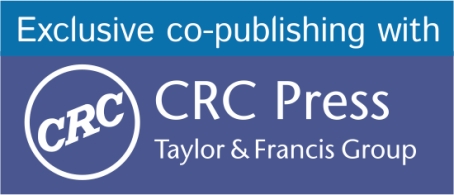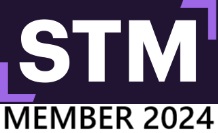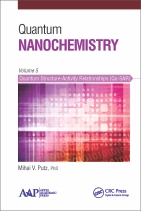|
|
Reviews “[This book] is of vanguardist value, while offering analytical insight and control to QSAR modeling, by algebraic (inherently quantum) approach as an alternative to already classical statistical methods, while not being disjointed yet rather complementary to it, so highly contributing to the QSAR field toward offering a true theory of chemical-biological interactions and mechanisms. . . .Thus, I heartily recommend this book by Mihai V. Putz for its use and study equally for training of the freshman (including graduate and Master students) in quantum eco-pharmaco-toxicity and QSAR as well by advanced researchers (as PhD students and post-docs) for modeling, ordering and interpreting the chemical-biological data by the nano-structural (i.e. quantum nanochemical) causes of the biological activities as recorded (observable) effects.” —Mircea V. Diudea, Department of Organic Chemistry, Faculty of Chemistry and Chemical Engineering, Babes-Bolyai University of Cluj-Napoca, Romania (from the Foreword to Volume 5) “Overall, these five volumes cover a lot of material and work well to unite physicists and chemists as quantum scientists. . . . Dr. Putz has drawn on his peer-reviewed papers, lectures, conversations, and other sources to write a five-volume set entitled Quantum Nanochemistry. In these volumes, Professor Putz aims to illuminate the physical underpinnings of matter. While the properties and interactions of matter have been well-described by many classical theories, quantum theory is needed to describe matter below the atomic scale. In these volumes, Professor Putz hopes to unite materials scientists, physicists, chemists, and others as quantum scientists, who use analytical descriptions of matter to inform their work. Concepts and ideas from engineering and materials science are mixed with those from chemistry and the history of science. . . . These books reduce all concepts to mathematic and analytic descriptions whenever possible, so readers will be able to follow the main themes, especially for those with a strong background in physics and mathematics. The books heavily reflect the author’s presentations and past work, yet the later volumes draw extensively from the literature. The books include many references for interested parties to explore. The books also include a number of informative tables and figures that could serve as helpful references; however, despite the emphasis on teaching and describing analytic work, there are no example problems given.” —Structural Chemistry, by Benjamin D. Smith, Department of Chemistry, Science Center, Saint Francis University, Loretto, PA ““This book, with its 2889 pages in five volumes, represents an impressive piece of work written by a single author. The wide variety of topics covered by the book reveals the author’s deep and encyclopedic knowledge of quantum theory. The author identifies himself as a theoretical physicist, and characterizes his book as a compilation of his lecture notes which he has used within his classes. The author’s favorite topics can be easily recognized in all five volumes. The sections on the history of quantum theory examine concepts and fundamental quantum theories in retrospect, and may prove useful and amusing reading for lecturers teaching quantum theory. Moreover, the unconventional look at some problems related to quantum theory may prove inspiring for experts actively working in the field. Students may find some useful material in the book . . . ” —International Journal of Molecular Sciences, by Petr Čársky, J. Heyrovský Institute of Physical Chemistry, Academy of Sciences of the Czech Republic, Prague, Czech Republic “[This book] is of vanguardist value, while offering analytical insight and control to QSAR modeling, by algebraic (inherently quantum) approach as an alternative to already classical statistical methods, while not being disjointed yet rather complementary to it, so highly contributing to the QSAR field toward offering a true theory of chemical-biological interactions and mechanisms. . . .Thus, I heartily recommend this book by Mihai V. Putz for its use and study equally for training of the freshman (including graduate and Master students) in quantum eco-pharmaco-toxicity and QSAR as well by advanced researchers (as PhD students and post-docs) for modeling, ordering and interpreting the chemical-biological data by the nano-structural (i.e. quantum nanochemical) causes of the biological activities as recorded (observable) effects.” —Mircea V. Diudea, Department of Organic Chemistry, Faculty of Chemistry and Chemical Engineering, Babes-Bolyai University of Cluj-Napoca, Romania (from the Foreword to Volume 5) Now Available in Paperback Volume 5 of the 5-volume Quantum Nanochemistry focuses on modeling and predicting of the enzyme kinetics and quantitative structure-activity relationships. It reveals the quantum implications to bio-organic and bio-inorganic systems, to enzyme kinetics and to pharmacophore binding sites of chemical-biological interaction of molecules through cell membranes in targeting specific bindings modeled by celebrated QSARs (Quantitative Structure-Activity Relationships) here reshaped as Qu-SAR (Quantum Structure-Activity Relationships). Volume 5 of Quantum Nanochemistry
Volume 1: Quantum Theory and Observability Volume 2: Quantum Atoms and Periodicity Volume 3: Quantum Molecules and Reactivity Volume 4: Quantum Solids and Orderability Volume 5: Quantum Structure-Activity Relationships (Qu-SAR) See information on the complete set here: http://www.appleacademicpress.com/quantum-nanochemistry-5-volume-set-/9781771881388 CONTENTS: About the Authors / Editors: Mihai V. Putz, PhD Associate Professor at Faculty of Chemistry, Biology, Geography, Laboratory of Computational and Structural Physical Chemistry for Nanosciences and QSAR, West University of Timisoara, Romania Mihai V. Putz, PhD is a laureate in physics (1997), with an MS degree in spectroscopy (1999), and PhD degree in chemistry (2002), with many post-doctorate stages: in chemistry (2002-2003) and in physics (2004, 2010, 2011) at the University of Calabria, Italy, and Free University of Berlin, Germany, respectively. He is currently Associate Professor of theoretical and computational physical chemistry at West University of Timisoara, Romania. He has made valuable contributions in computational, quantum, and physical chemistry through seminal works that appeared in many international journals. He actively promoted a new method of defining electronegativity, DFE (Density Functional Electronegativity), among new enzyme kinetics (Logistic Enzyme Kinetics), a new formalization of the structure-activity relationship (SPECTRAL-SAR) model, and recently the bondonic quasi-particle theory of the chemical bonding first application on nanosystems as graphene, all seeking for a unitary quantum approach of the chemical structure and reactivity targeting the bio-, pharmaco-, and ecological analytical description. He is Editor-in-Chief of the International Journal of Chemical Modelling and the International Journal of Environmental Sciences. He is member of many professional societies and has received several national and international awards from the Romanian National Authority of Scientific Research (2008), the German Academic Exchange Service DAAD (2000, 2004, 2011), and the Center of International Cooperation of Free University Berlin (2010). He is the leader of the Laboratory of Computational and Structural Physical Chemistry for Nanosciences and QSAR at Biology-Chemistry Department of West University of Timisoara, Romania, where he conducts research in the fundamental and applicative fields of quantum physical-chemistry and QSAR. In 2010 Mihai V. Putz was declared through a national competition the Best Researcher of Romania, while in 2013 he was recognized among the first Dr. Habil. in Chemistry in Romania. In 2013 he was appointed Scientific Director of newly founded Laboratory of Structural and Computational Physical Chemistry for Nanosciencs and QSAR in his alma mater of West University of Timisoara, while from 2014, he was recognized by the Romanian Ministry of Research as Principal Investigator of the first degree, and also becoming full member of International Academy of Mathematical Chemistry. |

 Follow us for the latest from Apple Academic Press:
Follow us for the latest from Apple Academic Press:
New Book Series: AAP Advances in Materials, Manufacturing & Computational Intelligence Techniques plans to offer a comprehensive exploration of cutting-edge research and applications in various engineering and scientific fields. This multidisciplinary series caters to a wide range of readers, from researchers and academics to industry professionals, providing in-depth knowledge and practical insights into solving complex problems. The series explores into a diverse array of topics, including advanced materials, manufacturing techniques, and computational intelligence. For more information, visit:
Click here
AAP WELCOMES PROF. MOHAMMED KUDDUS, PhD, AS AAP’S NEW ACQUISITIONS EDITOR for books on biotechnology, enzymology, microbiology, bioinformatics, bioremediation, biomedical technology, value-added products etc. Dr. Kuddus is Head of the Department of Biochemistry at the College of Medicine, University of Hail, Kingdom of Saudi Arabia. He is listed in Elsevier/Stanford University World’s Top 2% Scientists. He seeks book proposals from potential editors to consider for publication with Apple Academic Press. Contact: kuddus@appleacademicpress.com for more information. AAP welcomes Dr. Maulin P. Shah as AAP’s new acquisitions editor for books on Applied Microbiology, Environmental Biotechnology and Waste Management. Dr. Shah, a Scientist in the Industrial Wastewater Research Lab at Enviro Technology Ltd., India. seeks book proposals to consider for these topics and related areas: applied microbiology, environmental biotechnology and waste management, including environmental pollution, wastewater treatment, bioenergy, biofuel, circular economy, leachate treatment activated sludge process, environmental microbiology, agricultural microbiology, advance oxidation process, bio-electrochemical systems, bacterial genomics for wastewater treatment, and heavy metal remediation. maulinshah1979@gmail.com for more information. AAP is pleased to announce Shrikaant Kulkarni, PhD, as our new Senior Commissioning Editor for books in the areas of Polymer Sciences, Chemical Sciences, Nuclear Sciences, and Material Sciences. Dr. Kulkarni is Adjunct Professor, Faculty of Business, Victorian Institute of Technology, Melbourne, Australia; and Adjunct Professor, Centre of Research Outcome and Impact, Chitkara University, Punjab, India. You can reach him at Email: srkulkarni21@gmail.com for more information. New Book Series: AAP Series on Waste Biomass Valorization will explore the transformation of biomass resources into valuable products, addressing the growing need for sustainable alternatives to fossil fuels and non-renewable resources. For more information and to propose a book, please visit: Click here Congratulations to Hafiz Ansar Rasul Suleria, PhD, for receiving the Dean’s Award for Excellence in Research from the University of Melbourne, Australia, in recognition for his exceptional performance and strong commitment to advanced research in food science. Dr. Suleria is editor of AAP’s book series Innovations in Plant Science for Better Health: From Soil to Fork. For more information, visit: Click here Congratulations to Dr. Christian Mancas. His book Conceptual Data Modeling and Database Design: A Fully Algorithmic Approach was one of the 6 Best Data Modeling ebooks for Beginners by BookAuthority, a leading site for book recommendations. For more information, visit: Click here COMMENTS FROM AAP EDITORS AND AUTHORS AAP book title: Advances in Audiology and Hearing Science (2-volume set) “I have collaborated with AAP during the process of bringing my two-volume editing work to a final publishing phase. AAP support has been truly important throughout the initial and final stages of the book. While the majority of the publishing work is done at the early stages, the final touches that include the last-minute corrections of the authors are extremely crucial to the quality the book tries to convey. The assistance of AAP during the last stages of corrections and communication with the authors was a very positive contributor to my state of mind during those stressful moments. I recommend the publishing experience with AAP to other editors of scientific material.” —Stavros Hatzopoulos, PhD, Hearing Science Laboratory, University Hospital of Ferrara, Ferrara, Italy AAP book title: Nanotechnologies: The Physics of Nanomaterials (2-volume set) “I was very pleased with the interaction and support of the team at Apple Academic Press. They provided me with regular and useful information and updates throughout the publishing procedure. I am also very happy with the final product, which is of good quality. The books are now available and are professionally distributed through the various channels. I would like again to thank the team at AAP for all their hard work and support.” —David Schmool, PhD, Director, Groupe d’Etude de la Matière Condensée GEMaC, National Centre for Scientific Research, Université de Versailles/Saint-Quentin, Université Paris-Saclay,Versailles, France AAP book title: Physiology of Molluscs (2-volume set) “I have enjoyed the full benefit of support, encouragement, and kindness from the members of AAP I have had the pleasure of being associated with. In the same vein, I hope AAP was satisfied with the book series I have edited in advancing the knowledge. It has been a great journey and was a great pleasure and satisfaction. Advancing scholarship through publications is one of the best routes publishers can take, and I would hold AAP as one of the best ones.” —Saber Saleuddin, PhD, University Professor Emeritus, Department of Biology, York University in Toronto, Ontario, Canada AAP book title: Green Chemistry and Sustainable Technology: Biological, Pharmaceutical, and Macromolecular Systems “It had been my pleasure to work with the production team of Apple Academic Press for almost a decade. The best presentation of our work was due to their hard work and with careful scrutiny. I am sure that every one of them takes extra pains to publish the book nicely, maintaining the quality and timeliness. It was a rewarding experience to work with AAP. I would like to publish more with AAP on my upcoming projects in future also.” —Prof. Suresh C. Ameta, Professor of Eminence (Distinguished Professor), Faculty of Science, PAHER University, UDAIPUR, India AAP book title: New Frontiers in Nanochemistry, 3-volume set, plus many others "Publishing a book, either as author or editor, is a journey from the initial vibration to the piece of knowledge towards the present future of humanity at large. Such a journey is about climbing and tunneling, about diving and driving through, about inspiration and tuning, about hard working in every instance; and it is also about time. Very few Global Publishers have the wisdom and patience and kindness and openness to authors, contributors, and readers while being truly crafting oriented as Apple Academic; yet all is about people and their education, vision and assumed mission; the Apple Academic Team heartily succeed that in achieving the world class scholarly acclaim by the quality involvement in all chain of plus value added with each publishing event. Hearty Compliments! Excelsior Apple Academic!" —Mihai V. Putz, PhD, Dr.-Habil., MBA, Professor, Faculty of Chemistry, Biology, Geography, Laboratory of Computational and Structural Physical Chemistry for Nanosciences and QSAR, West University of Timi?oara; PI-1, Laboratory of Renewable Energies - Photovoltaics, National Research and Development Institute for Electrochemistry and Condensed Matter (INCEM), Timi?oara, Romania AAP book title: The Chemical Century: Molecular Manipulation and Its Impact on the 20th Century “All my experiences with AAP have been very positive. I entrusted AAP with the publication of The Chemical Century: Molecular Manipulation and Its Impact on the 20th Century and found the quality of the book that they produced to be excellent. My two contacts at the company were very responsive and efficient throughout the publication process.” —Richard J. Sundberg, PhD, Professor of Chemistry, University of Virginia, Charlottesville, Virginia, USA AAP book titles: Medical Tourism and Wellness: Hospitality Bridging Healthcare (H2H)© and Medical Travel Brand Management: Success Strategies for Hospitality Bridging Healthcare (H2H) “I have enjoyed my scholarly creative work with Apple Academic Press. They have been timely, creative, and very helpful for my two books with them. I encourage you to consider publishing your work with AAP.” —Frederick DeMicco, PhD, RDN, Executive Director and Professor School of Hotel and Restaurant Management, Northern Arizona University, Flagstaff, Arizona AAP book title: The Chemical Evolution of Phosphorus: An Interdisciplinary Approach to Astrobiology “I’m very pleased with the books you have edited. It shows a very good and careful work by everyone involved along the whole production process, and so the final result is a beautiful piece: it has come out as a very nice and appealing book, easy to handle and read, .... and hopefully of interest for people from diverse related fields!” —Enrique Macia-Barber, PhD, Professor of Condensed Matter Physics, Universidad Complutense de Madrid, Spain |
Copyright © 2025 Apple Academic Press Inc. All Rights Reserved.



